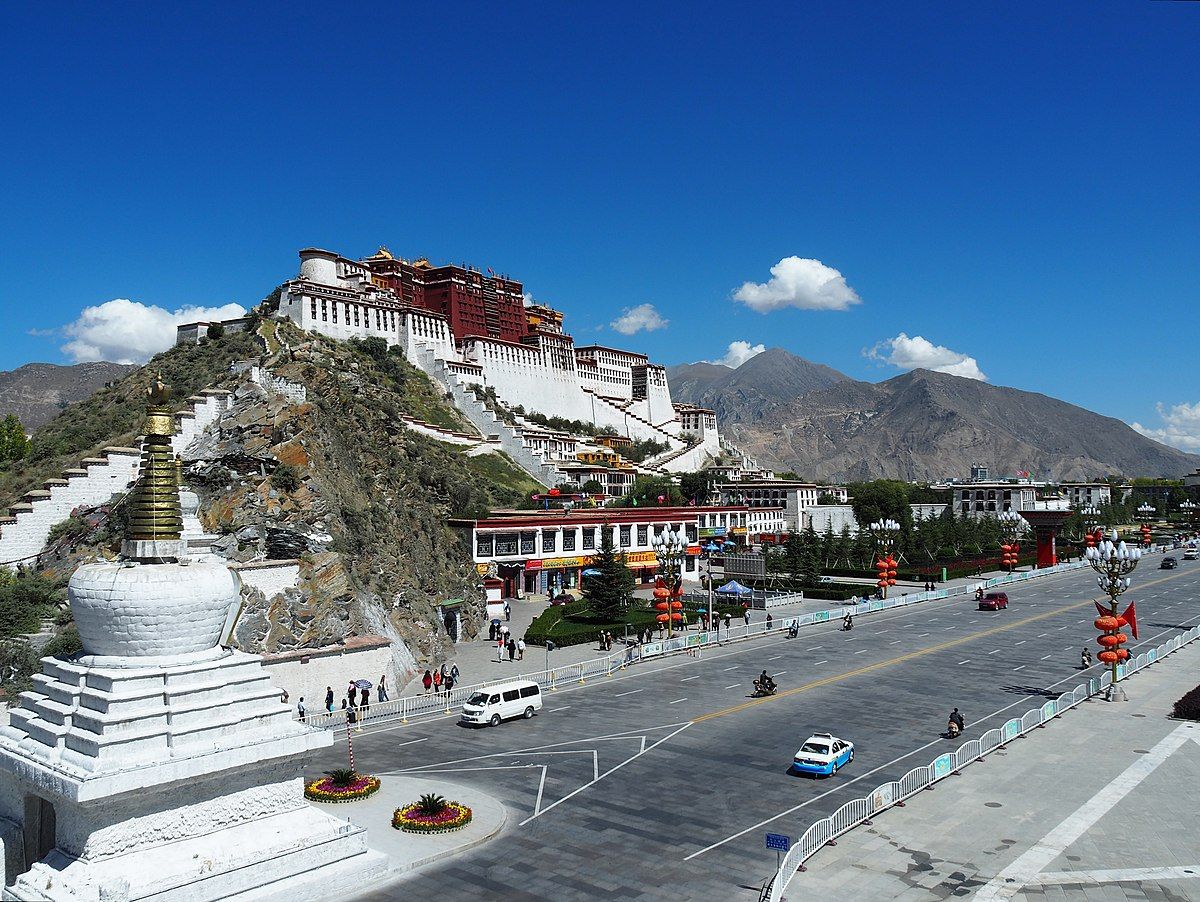The story of Tibet did not start a few years or a few decades ago. It started more than half a century ago. A heaven-like play that was home to sky-rocketing mountains blessed by thousands of Buddhist monks, that reeled under the Chinese expansionist forces who oppressed the land and its residents in the lust of power.
History of Tibet: According to the archaeological data, human existence was first witnessed in Tibet nearly half a million years ago, when India was inhabited. The Tibet plateau was first inhabited by modern humans nearly twenty-one thousand years ago. However, this population was displaced by Neolithic immigrants from parts of China.
Since 500 B.C. Tibet was ruled by several Kingdoms namely Zhangzhung, Yarlung Dynasty, and other Tibetan tribes. The Tibetan empire was founded in 618 and flourished till 842 before it fell under attack by foreign invaders that included the Mongols. However, Buddhism continued to flourish in the region and it became a holy place for the Buddhists very early.
Tibet’s Independence: With continuous resistance and the fall of the Yuans, Tibet gained its independence in the 14th century and was ruled by the Dalai Lama in the 17th and 18th centuries. Thus, Tibet remained independent for more than 4 centuries and it is very clearly mentioned in the historic records. In the 17th and 18th centuries, the fifth Dalai Lama led the establishment of the Ganden Phodrang government and the Dalai Lama lineage continued to be a body of authority in Tibet.
Qing rule
A Qing expedition force emerged victorious over the Dzungars and freed Tibet from their occupation. The Qing rule was established and went on to rule over Tibet till 1912. Lhasa, which is now the capital of Tibet was the most populated area and had the dominance of the Dalai Lamas.
Chinese Occupation
Tibet had declared itself from any kind of Chinese influence in as early as 1913. However, after gaining independence from the British, China continued with its policy of expansionism and used the 14th Dalai Lama, who had a huge following over the region, to gain control of Tibet using the People’s Liberation Army. China negotiated the seventeen points agreement and declared the People’s Liberation Army’s sovereignty over Tibet while maintaining the autonomy of the region. The Dalai Lama refused the agreement and fled to India’s Dharamshala in 1959 fearing action by the PLA. 1959 was the year when the people of Tibet started a rebellion against the Chinese occupation, but with little or no help from the then government of India or other big powers in the world, the rebellion remained symbolic. Dharamshala became the center for Buddhist monks and the Dalai Lama and the government of Tibet in exile started to run from there. The PLA started enforcing its authority over Tibet starting 1959 and a lot of Buddhist monasteries were destroyed, people were harassed to accept Chinese rule. Most of the natives of Tibet fled to India or other countries to save themselves from the authoritative government.
But the suffering of the Tibetan people didn’t end there. China started bringing political and economic reforms to assert its authority over Tibet and used a vast area of Tibet to dispose of radioactive waste. Other world powers such as Russia and the UK also used the land for the same purpose and thus China went on with its brutality unopposed. The disposal of the radioactive waste affected the water of some of the key rivers such as the Brahmaputra affecting countries such as India and Bangladesh but the silence of big powers ensured that Tibet and its natives continue to suffer at the hands of the Chinese expansionism. The situation became worse during the rule of Mao Zedong or Chairman Mao who started the Great Leap Forward killing over 10 lakh Tibetans and more than 6,000 monasteries were destroyed during the cultural revolution. Mao threw in the theory of Tibet being China’s palm and Nepal, Bhutan, Sikkim, and Manipur being its fingers. This is what forced Indian and China to a brief war after which China captured a vast area measuring 38,000 sq km which is today known as Aksai China. China claims the territory of Arunachal, Sikkim, and Bhutan as its integral part and this remains an issue that can force the two nuclear powers to war in the region. While China continues with its expansionist strategies, the people of Tibet continue to struggle with little light at the end of the Tunnel. Tibet continues to fight for its cultural rights with the help of the Indian government. Lobsang Sangay is the current President of the Tibetan government in exile. The 14th Dalai Lama remains a guest of India which he calls his second home. The people of Tibet home for a free sovereign country while China continues to walk over their rights using its economic dominance.




























